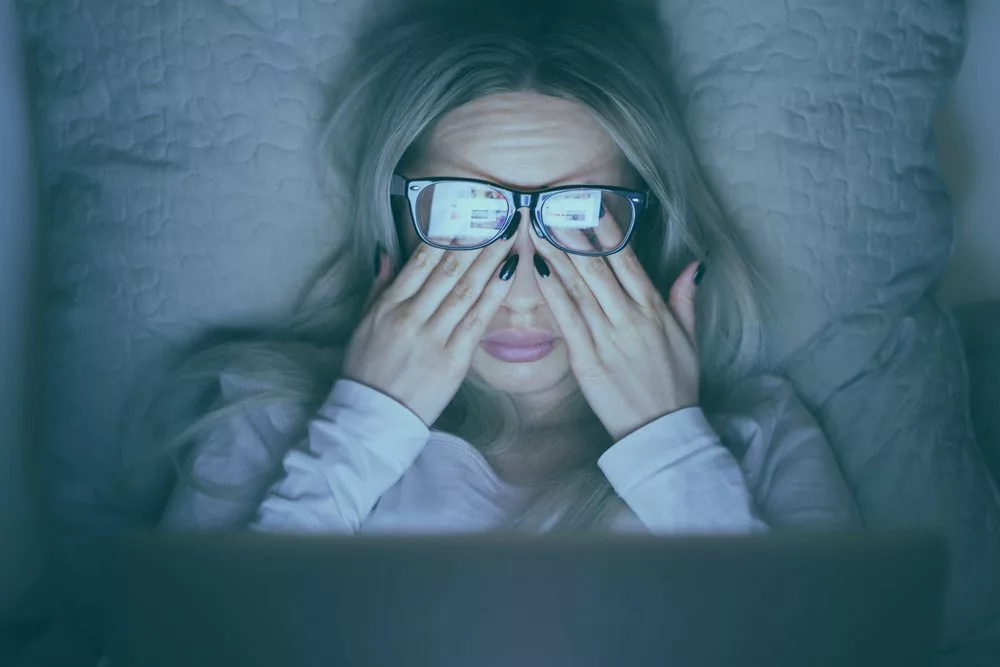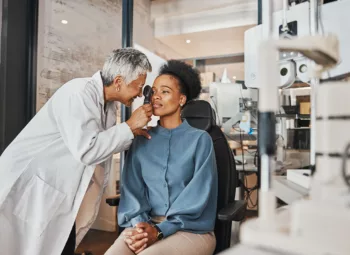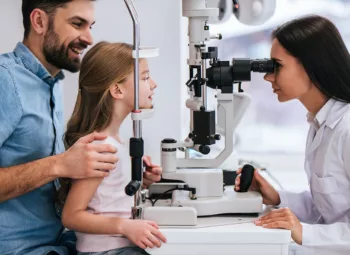
Digital eye strain is more common than we may think. More and more we’re spending long periods of time focused on our digital devices. Whether for work or play, most of us are using screens every single day and up to 90% of adults spend two hours or more staring into the glowing blue light of a screen of some kind on a daily basis.
Digital eye strain, also known as Computer Vision Syndrome (CVS) is negatively impacting our lives and symptoms include dry irritated eyes, fatigue, blurred vision, eye strain, headaches, and even neck or shoulder pain.
It is a problem that’s happening more and more, even children are experiencing digital eye strain, from the moment we wake up to the moment we go to bed; our eyes are glued to a great many screens.
Protect your Eyes Today
Our computers, tablets, and smartphones are amazing devices and I’m sure many of us would find it quite difficult to continue on without them. The good news is, if your digital habits are putting your eyes at risk, there are many steps you can take to mitigate the negative effects of prolonged screen use.
Some of the primary factors that can have a negative effect are improper posture, computer set-up, prolonged screen use, too small of fonts/images, poor lighting, and the amount of blue light emitted by your device.

Here are 6 simple ways to protect your vision and prevent Computer Vision Syndrome:
1. Start with your Workspace
Create a workspace that encourages proper posture. At your desk, center your computer screen at arms-length or at a minimum of 20 inches and just slightly below eye level. This setup will help you to keep your back straight and prevent strain on your neck, back, and shoulders.
2. Practice 20/20/20
The 20/20/20 rule is simple: For every 20 minutes of screen time take a 20-second break and focus on something at least 20 feet away. Doing this will allow your eyes to periodically relax and it takes about 20 seconds for them to completely do so.
3. Nutrition & Water
It should come as no surprise that good nutrition and proper hydration will always benefit your body and eyes. Dehydration can exacerbate dry eye symptoms and proper diet can reduce fatigue and boost good vision. Put good in and get good out.
4. Screen Brightness & Blue Light
The idea is to find a happy medium when it comes to brightness. Not too bright and not too dim. Adjust the brightness of your screen to a comfortable level and consider switching the background color from a bright white to a light gray.
Digital devices emit significant amounts of blue light that can be described as visual noise that contributes to eye strain.
Research is showing that long-term exposure to the light from back-lit displays may contribute to the degeneration of the retina. Because of this, you may wish to invest in eyewear or a screen cover that is designed to block and selectively absorb blue light.
5. Don’t Forget to Blink
A silly sounding suggestion, yes. But did you know that during prolonged screen time your blink rate may be reduced by as much as 60%? This results in dry, itchy, and irritated eyes. Blinking keeps your eyes lubricated and promotes ocular comfort.
6. Regular Eye Exams
Many eye problems you may be developing can likely be prevented if caught early and some eye problems have no warning signs at all. Be sure to schedule regular eye exams and get the proper vision care you require.
If you are a regular computer or digital screen user, an eye professional can discuss preventive strategies and identify eye problems early.
Take the Step, Preserve your Vision
Many of us rely on computers and other devices to get our work done. However, hour after hour in front of a screen can really be harmful to our eyes over time. Take the time to prevent Computer Vision Syndrome and protect your eyesight.
Learn more about the causes and effects of digital eye strain today! Call or contact online the caring and experienced professionals at NeoVision Eye Center to schedule a comprehensive eye exam. Together we’ll discuss your eye care needs and keep you on a path towards long-lasting clear vision.





